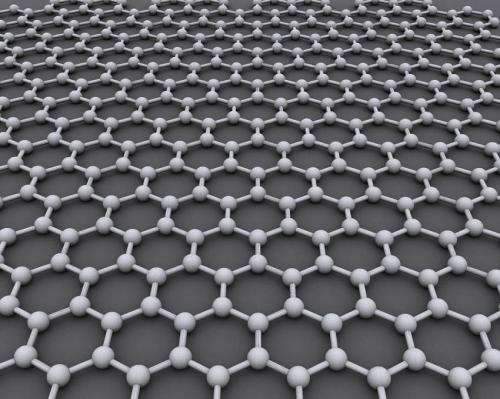Graphene-infused packaging is a million times better at blocking moisture

Plastic packaging might seem impenetrable—and sometimes nearly impossible to remove—but water molecules can still pass through. And this permeability to moisture can limit the lifespan of a product. To better protect goods such as electronics and medicines, scientists have developed a new kind of packaging that incorporates a single layer of graphene. They report their material, which reduces by a million fold how much water can get through, in the journal ACS Nano.
These days, packaging is everywhere, sometimes even on individual fruits or vegetables. Wrapping products from food to electronics in plastic films protects them from dust, bacteria and to some extent water. But to maximize the lifetime of a moisture-sensitive device such as an organic light-emitting diode for more than a year, for example, the packaging must restrict water vapor from entering at a rate of less than 10-6 grams per square meter every day, according to Praveen C. Ramamurthy. Today's typical packaging is far from achieving that goal. Ramamurthy and colleagues wanted to see whether adding graphene to flexible polymer films would help.
The researchers synthesized a single layer of graphene by chemical vapor deposition and using a simple and scalable process, transferred the graphene to a polymer film. Water vapor permeated the material at the target rate of less than 10-6 grams per square meter per day. An accelerated aging test showed that an organic photovoltaic device wrapped in the graphene-infused film would have a lifetime of more than 1 year compared to less than 30 minutes if packaged in the polymer without the graphene.
More information: Sindhu Seethamraju et al. Million-Fold Decrease in Polymer Moisture Permeability by a Graphene Monolayer, ACS Nano (2016). DOI: 10.1021/acsnano.6b02588
Abstract
Flexible, transparent and moisture impermeable materials are critical for packaging applications in electronic, food and pharmaceutical industries. Here we report that a single graphene layer embedded in a flexible polymer reduces its water vapor transmission rate (WVTR) by up to a million fold. Large area, transparent, graphene embedded polymers (GEPs) with WVTR of as low as 10-6 g m-2 day-1 are demonstrated. Monolayered graphene, synthesized by chemical vapor deposition has been transferred on to the polymer substrate directly by a very simple and scalable melt casting process to fabricate the GEPs. The performances of the encapsulated organic photovoltaic (OPV) devices do not vary even after subjecting the GEPs to cyclic bending for 1000 cycles. Accelerated aging studies show on working OPV devices encapsulated in the GEPs show a 50% lifetime of 1,000,000 minutes, which satisfies the requirements of organic electronics.
Journal information: ACS Nano
Provided by American Chemical Society



















